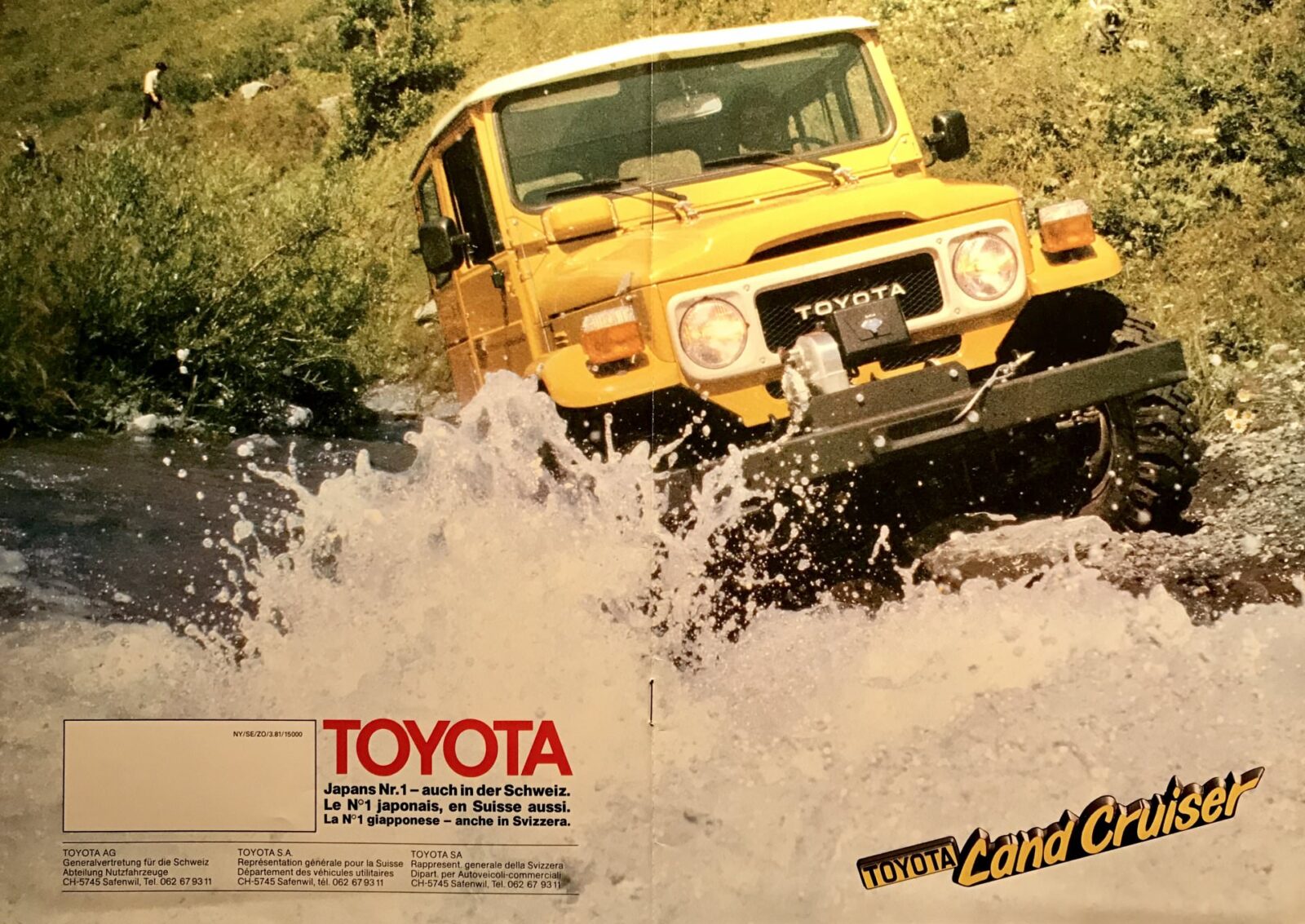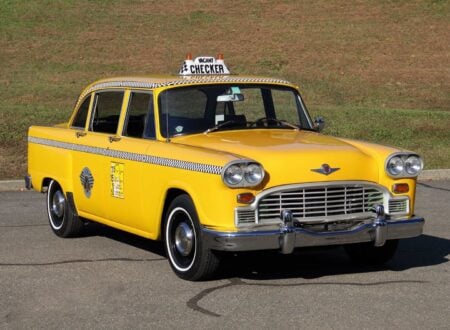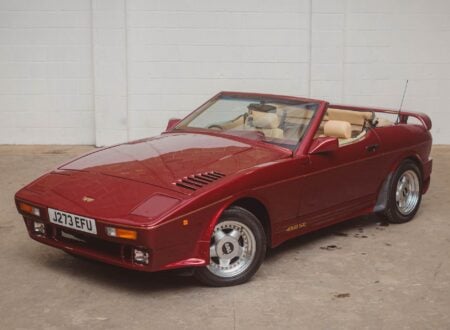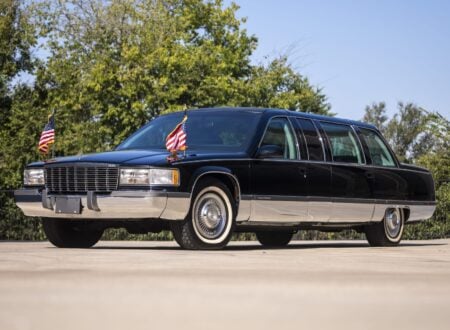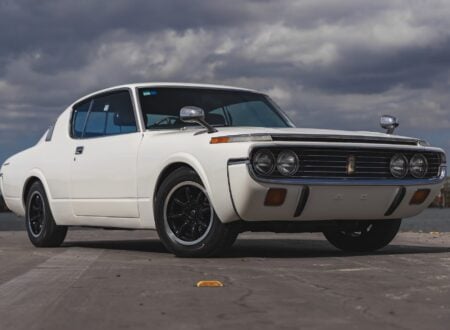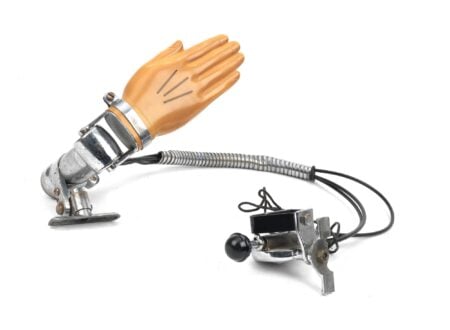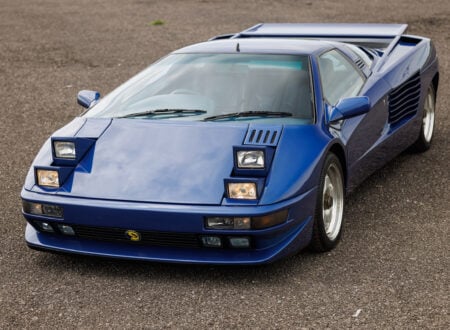The story of the Toyota Land Cruiser J Series (FJ40 / BJ40 etc) starts in the Philippines during the Second World War, the Japanese had invaded the nation, along which much of the rest of East Asia, and they found an abandoned Jeep that had been left by retreating American forces.
There is a little contention as to exactly which Jeep or Jeep-like vehicle it was that they found, most sources say it was either a Willys Jeep or a Ford GPW (Ford’s Jeep), but some claim it was an American Bantam BRC 60 Mark II.
Toyota themselves haven’t included any reference to this captured vehicle in their own history of the Land Cruiser, and instead pick up the story in the 1950s.
Whichever vehicle it was, we know that it was an American military 4×4, and we know the Japanese military immediately recognised how useful it would be to have their own version.
It was shipped back to Japan, and Toyota was tasked with building a local version using as many off the shelf parts as possible – they were also instructed to make sure it didn’t look too much like a Jeep.
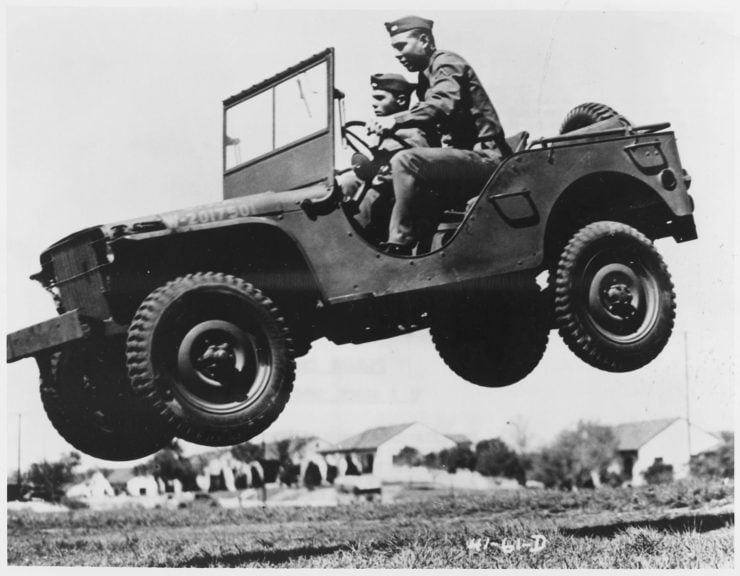
Above Image: A WW2 era Ford GPW undergoing testing.
The Toyota Land Cruiser’s Grandfather: The Toyota AK10
There were two Japanese vehicles made from the captured American Jeep. The first was the Type 4 Compact Cargo-Truck (Yon-Shiki Kogata Kamotsu-Sha 四式小型 貨物 車). The second was the “AK10” which was created by reverse engineering the American vehicle. The AK10 was very similar to the Jeep it was based on, and was powered by an inline four cylinder 2.3 liter (2,259 cc) Toyota Type C gasoline engine. The AK10 was fitted with a three speed manual transmission mated to a two speed transfer box.
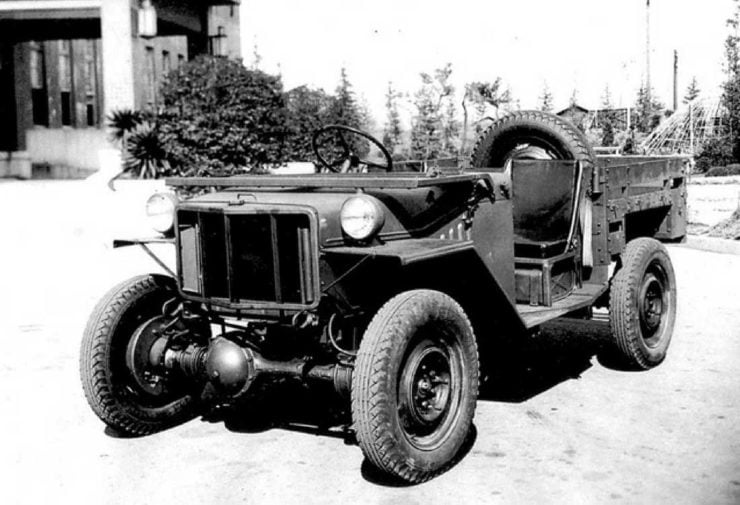
Above Image: An early Toyota “Jeep” prototype.
At the end of the war Japan was occupied and its industries were struggling. The lessons of the aftermath of the First World War had been learned however in regard to the fact that it had been the punitive economic damage that had been done to Germany under the terms of the Treaty of Versailles that had helped Hitler get into power.
With that lesson of history learned the Allies engaged in assisting with the rebuilding Japan’s industries and economy in addition to working to establish in Japan a democratic government.
The peace in East Asia did not last long however with the Communists taking power in China and then seeking to expand their empire into Korea, resulting in the Korean War beginning in mid-1950. With a new war to fight the US military asked Toyota to make 100 Jeeps for the war effort using the Willy’s Jeep specifications, which they duly did.
The Post-War Period Toyota Land Cruiser BJ and FJ (1951-1955)
Then began the development of the “Jeep” like vehicles that would give rise to the Toyota J40 Land Cruiser series starting with the Toyota BJ in 1951, the vehicle gaining the name “Land Cruiser” coined by technical director Hanji Umehara in 1955. It’s widely believed that the new name was inspired by the British Land Rover.
Physically a bit larger than the original Bantam Reconnaissance Car and the Willy’s Jeep the J series Land Cruiser was an ideal size for a four wheel drive vehicle for military or civilian use.
Not only did Toyota get the physical size right but they also fitted the vehicle with a more powerful engine than the British Land Rover or the original Willy’s Jeep: they fitted it with the Toyota Type B 3.4 liter OHV inline six cylinder gasoline engine which delivered a healthy 84hp at 3,600 rpm and torque of 159 lb/ft at a low and useful 1,600 rpm.
The one thing the 4×4 did not have however was a transfer case providing low and high range options. Perhaps it was thought that with that size and power of engine with its excellent low speed torque that “low range” gearing would not be needed.
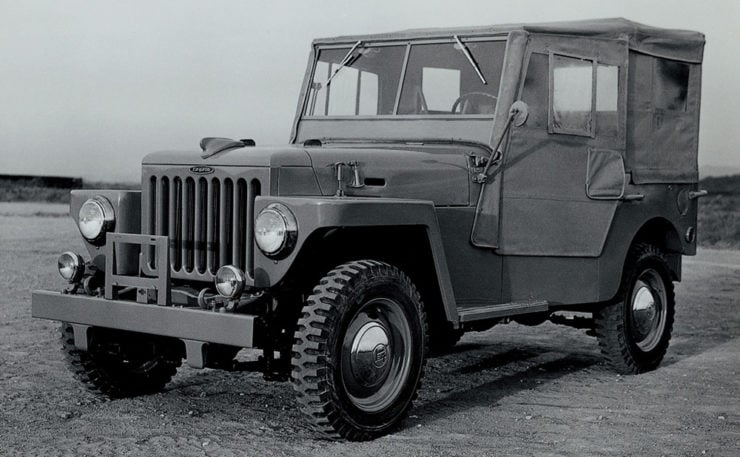
To demonstrate the prowess of the Toyota BJ and demonstrate that it didn’t need a low range transfer box Ichiro Taira drove a BJ to the sixth level of Mount Fuji, becoming the first person to do so. Ichiro Taira’s drive was supervised by Japan’s National Police Agency and it so impressed them that made the Toyota BJ their official police four wheel drive patrol car and placed an order for 289 of them.
By 1953 production of the Toyota BJ was in full swing with three model variants on offer: the BJ-T touring model; the BJ-R radio vehicle; and the BJ-J cowl chassis which could be equipped with a special custom body such as for making a fire-engine for example.
1954 saw the BJ-J also offered as the FJ-J fitted with the larger and more powerful Toyota Type F inline six cylinder gasoline/petrol engine. This 3.9 liter (3,878 cc) engine with its mild 6.8:1 compression ratio produced 125 hp with torque of 209 lb/ft and was a perfect power plant to haul around the necessarily heavier bodies that were fitted to the cowl chassis versions.
The Toyota Land Cruiser J20 and J30 Series (1955-1960)
The J20 Land Cruiser was introduced in 1955 and was an upgrade of the original BJ and FJ. The suspension was improved with the fitting of four plate leaf springs inherited from a Toyota light truck and the body styling was also made more attractive.
This model featured the curved fenders and hood/bonnet style that would define the look of the J40 series that was to come.
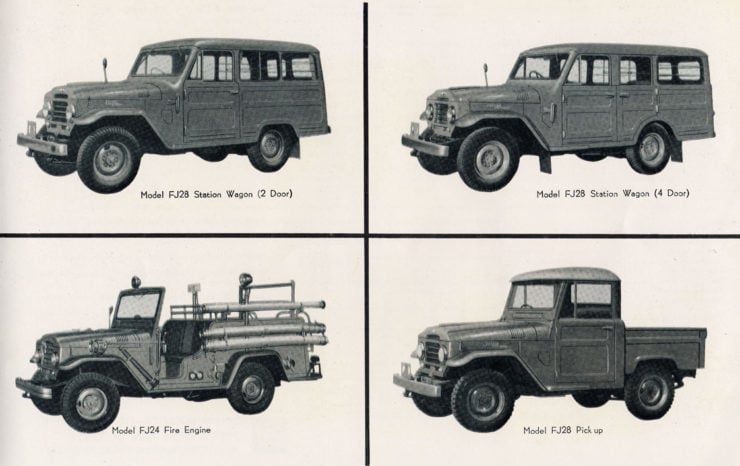
For the J20 and J30 series Toyota offered a new and more powerful version of the Type F engine, still of 3.9 liters capacity but this one providing 105 hp. This engine was mounted a little further forward to increase interior space and especially to improve front leg-room for tall drivers. These models still lacked a low-range/high-range transfer box although the three speed gearbox was provided with synchromesh on second and third gears.
Body styles offered for the J20 and J30 series included the open soft top and a range of others including two door and four door wagons and pick-ups.
Enter the Toyota Land Cruiser FJ40 – BJ40 / J40 Series (1960-1984)
The Toyota Land Cruiser J40 series made its debut at the dawn of the swinging sixties when the latest dance craze was “The Twist”, and the Beatles and the Rolling Stones became Britain’s greatest exports along with the Austin Mini, the “mini skirt”, and 007 James Bond movies.
Of all the things that emerged in the early 1960s the Toyota Land Cruiser J40 proved to be one of the most practical and durable new things of all. If you were out in some remote part of the world where vehicle failure could prove fatal not only for the vehicle but also for its occupants unless there was a prearranged rescue organized, then a Toyota Land Cruiser was a comforting thing to have: especially one with a diesel engine and a decent two-way radio.
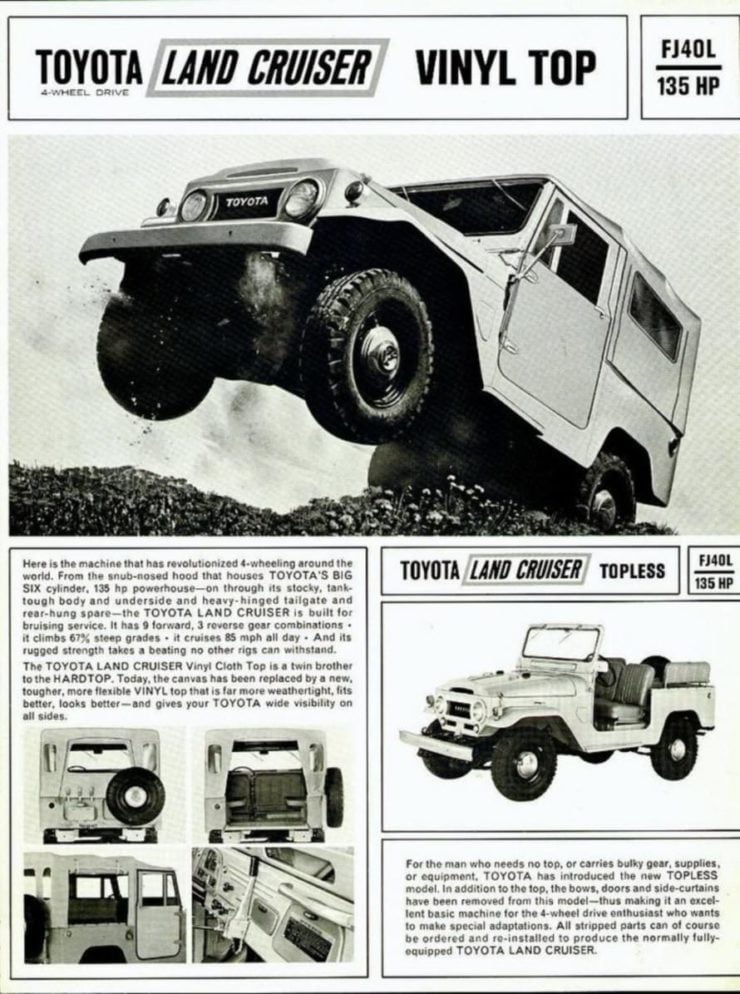
By the time I went to work in a mining town in the Australian outback in the early 1970s there were very few other 4x4s to be seen: every man and his dog seemed to have a Land Cruiser and they were all very happy with them. One of the major improvements that helped ensure that the J40 Land Cruiser would become a legend in its own time was it being fitted with a low-range/high-range transfer case making it much easier to crawl uphill and down dale when the going got steep and often rocky.
Although it still had a three speed gearbox there were farmers and pastoralists who preferred that over the four speed which was fitted from 1974, regarding the second gear of the three speed box perfect for cruising along firebreaks and trails where top gear was just too quick for the task and in the four speed box third was a tad too high and second definitely too low.
The J40 was initially fitted with much the same 3.9 liter Type F inline six cylinder gasoline/petrol engine as its predecessors but improved and delivering 125 hp. In 1974 the four speed gearbox replaced the three speed: to the delight of some, and to the chagrin of others, and the Land Cruiser was also offered with the four cylinder 3.0 liter Type B diesel engine. With a compression ratio of 21:1 this engine produced 80 hp at 3,600 rpm and 141 lb/ft torque at 2,200 rpm.
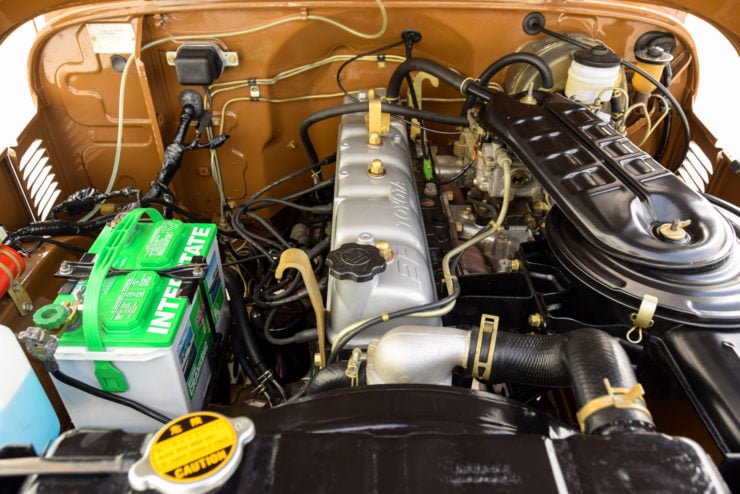
The following year in 1975 the gasoline/petrol engine was improved on with a new 4.2 liter (4,230 cc) inline six which had a compression ratio of 7.8:1 and delivered 135 hp with 200 lb/ft of torque. 1976 saw the US model of the FJ40 receive front disc brakes to help it lose momentum rather more quickly than its old fashioned drum brake siblings. American FJ40’s also were offered with air conditioning and power steering in 1979.
1981 saw the diesel engine BJ40 also offered with disc brakes and the long wheelbase BJ45 was offered with the 3.4 liter inline four cylinder Type 3B diesel engine producing 90 hp from its 20:1 compression ratio with torque of 160 lb/ft at 2,000 rpm.
Some markets were supplied with the 3.6 liter (3,576 cc) inline six cylinder OHV Type H diesel engine as an option from 1973. Thus fitted the Land Cruiser was designated an HJ45. This engine gave the Land Cruiser diesel power of 94 hp at 3,600 rpm with torque of 159 lb/ft at 2,200 rpm. In 1981 this engine option was upgraded to the 4.0 liter 2H diesel producing 104 hp at 3,500 rpm with torque of 177 lb/ft at 2,000 rpm. Thus fitted the model designation was HJ47.
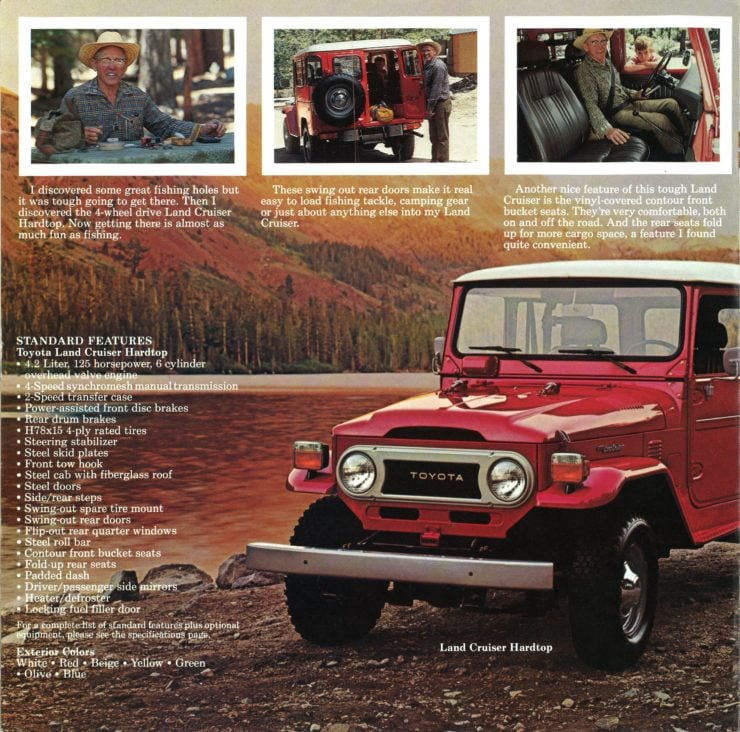
Production of the J40 was phased out finally ending in 1984, but the series lives on today as one of the most beloved 4x4s of its time, with newly restomodded vehicles fetching well over $100,000 USD.
The “Bandeirante” Brazilian Land Cruisers
Toyota’s J40 Land Cruiser was made in various parts of the world and Brazil was one of those nations. Toyota had established itself in Brazil in June 1952 with a modest 200 meter by 50 meter assembly plant which initially assembled CKD (Completely Knocked Down) kits imported from Japan. This was complicated by a government ban on the importation of spare parts however and Toyota’s efforts to get spare parts of a sufficient quality control standard proved difficult: local parts were not equal in quality to Japanese made parts and were also expensive.
In 1958 Toyota established Toyota do Brasil Industria e Comercio Limitada as a subsidiary company to build Toyota’s in Brazil. On Christmas Eve of that year Toyota do Brasil purchased the local Land Rover manufacturing facility as Land Rover had decided to withdraw from the Brazilian market.
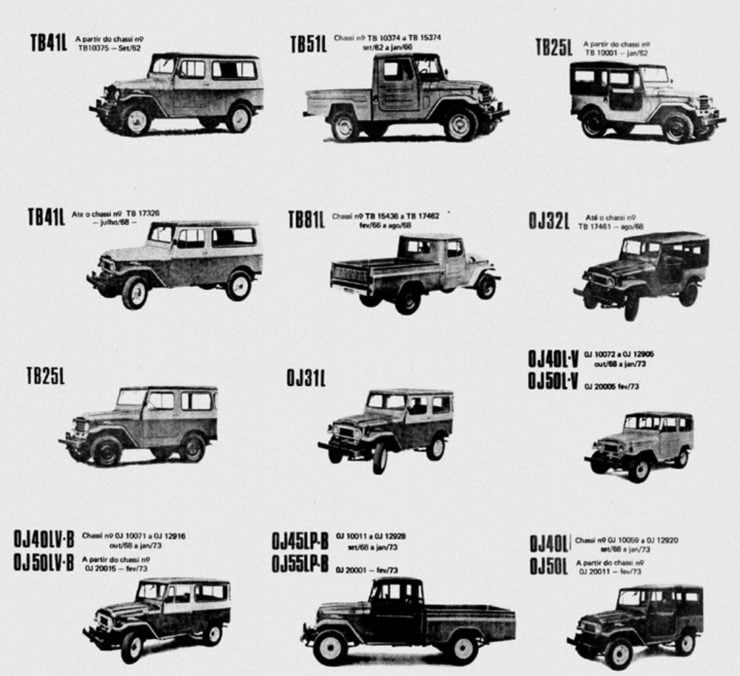
Production began with the FJ25L Land Cruiser in May 1959 and production was progressively expanded with the move to a large facility in San Bernadino on the outskirts of San Paulo which was completed in late 1962. Production of the J40 based vehicles beginning with the TB41L long wheelbase hard top began in 1963.
In order to ensure a level of local production agreeable to the Brazilian Government the engines of these vehicles were sourced from Mercedes-Benz do Brasil Limitada, so these Toyota Land Cruiser Bandeirante (Pioneer) J40 vehicles were fitted with Brazilian made Mercedes diesel engines and have some body and light fitting differences to the J40 Land Cruisers made in Japan.
Conclusion
Today the J40 series Land Cruisers remain one of the single most universally loved 4×4 vehicles of the era, their values have been skyrocketing and where it was possible to buy them cheaply a few years ago you’ll likely now be facing a price similar to a mid-level modern sports car.
Parts availability for the J40s is excellent and many companies and websites exist to serve owners and restorers, it’s possible to buy new pressed steel body panels and (almost) any mechanical parts needed. A number of companies like Legacy Overland, The FJ Company, and Icon have popped up that restore them to better-than-new condition and sell them for brand new Porsche 911 money, and they’re selling as many of them as they can turn out.
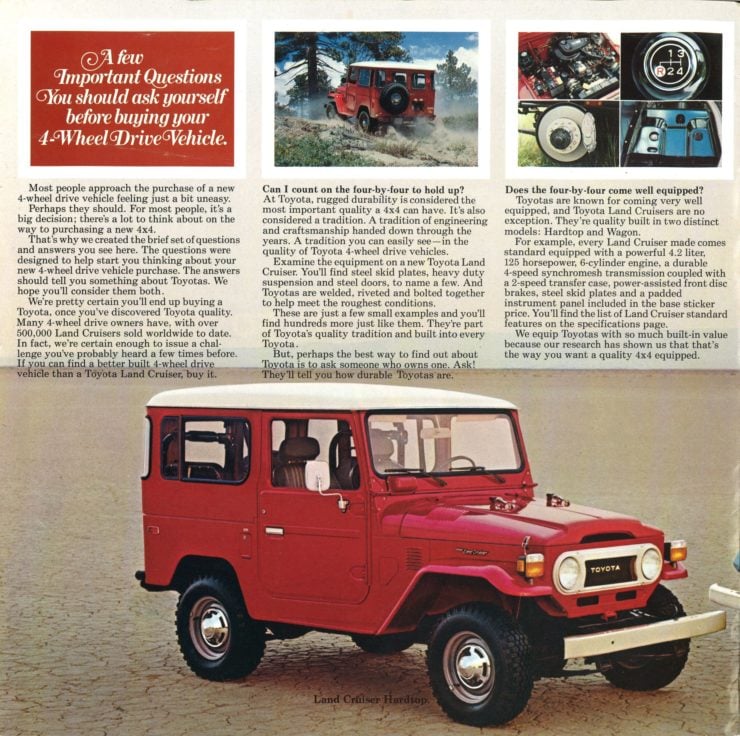
Epilogue
When your expectant wife climbs into the cab of your work FJ40 Land Cruiser tray top and tells you “We need to get to the hospital quickly” you appreciate the fact that you have 4.2 liters of six cylinder power under the hood and indeed the FJ40 got going up the freeway at the sorts of speeds many other 4x4s of the time couldn’t.
The brakes were good too, we managed to comfortably miss the ice cream van that decided to do a U-turn in front of us not far from the hospital: if you can imagine an ice-cream truck driver with a look on his face like a rabbit in the headlights then you can imagine the moment. Then a motorcycle police officer arrived and kindly gave us an escort all the way to the hospital. Suffice to say we made it in time and our son was not born in the cab of the Land Cruiser.
Of all the Land Cruisers I think the BJ40 was the one I liked the most, despite its lack of racing to the maternity hospital speed it was nonetheless quick enough for life’s less dramatic moments and it was comfortable for long highway runs as well as being a vehicle that you could have some confidence in when you were a long way from anywhere.
The Toyota J40 Land Cruiser was the vehicle that made Toyota’s name a household word. It carved out a name for itself in the diesel and dust of the Australian Outback, it became the vehicle of choice for African Safari operators, and it proved itself up against the American four wheel drives, including the Jeep that had originally inspired it.
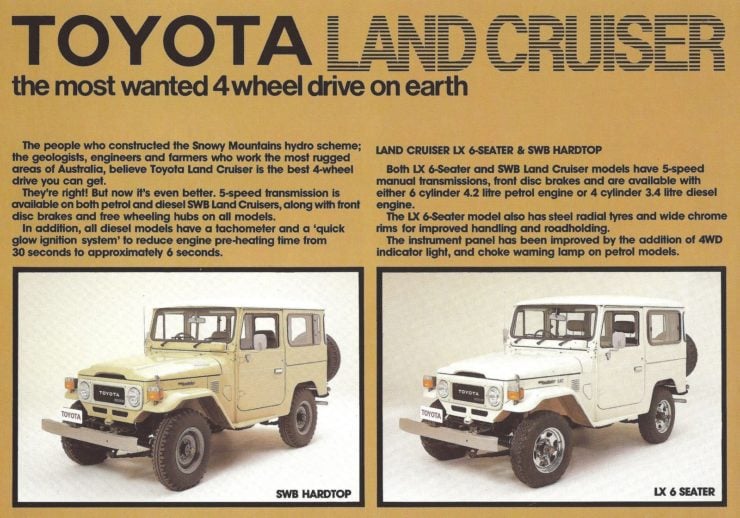
Photo Credits: Toyota

